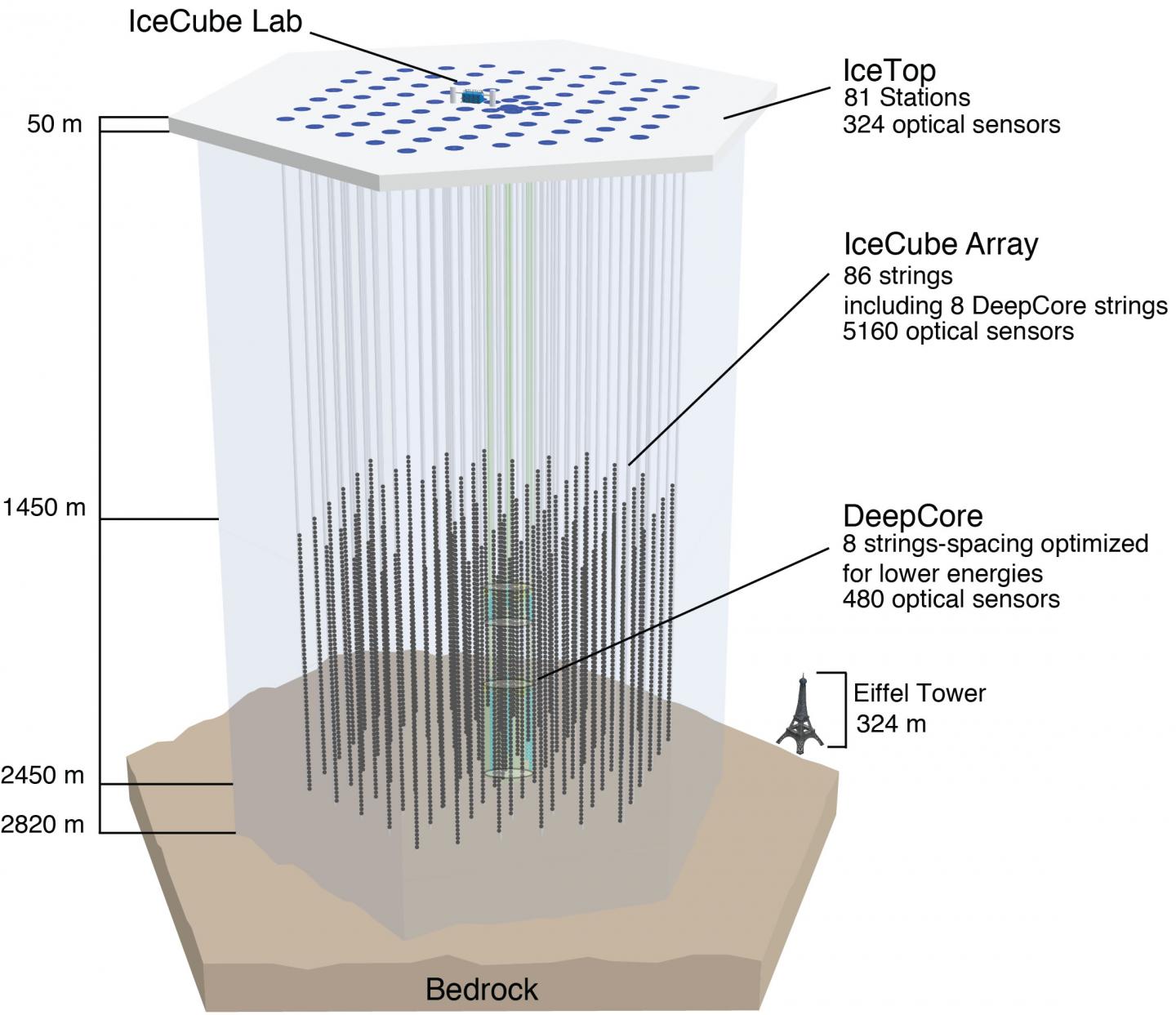
Credit: IceCube/NSF
The IceCube Neutrino Observatory in Antarctica is about to get a significant upgrade. This huge detector consists of 5,160 sensors embedded in a 1x1x1 km volume of glacial ice deep beneath the geographic South Pole. The purpose of this huge installation is to detect neutrinos, the “ghost particles” of the Universe. The IceCube Upgrade will add more than 700 new and enhanced optical sensors in the deepest, purest ice, greatly improving the observatory’s ability to measure low-energy neutrinos produced in the Earth’s atmosphere. The research in neutrinos at the Niels Bohr Institute, University of Copenhagen is led by Associate Professor Jason Koskinen
The upgrade is necessary for the development of a new field of research
“The current IceCube detector is providing leading results in astrophysics and particle physics, specifically measurements of neutrino oscillations by researchers in Copenhagen, but can only take us so far. When neutrinos “oscillate”, they change “flavour” – and actually change properties. Through a truly international effort, this new detector is going to be a huge leap forward in our ability to understand the fundamental properties of the neutrino in ways that no other project in the world can do now”, says D. Jason Koskinen, Associate Professor and leader of the local IceCube research group at the Niels Bohr Institute.
Neutrino oscillations – creating a new neutrino vision
The principal goal of this first IceCube extension is to perform precision studies of the strange phenomenon known as ‘neutrino oscillation’, where neutrinos produced as one type may ‘oscillate’ to another as they travel. The sensitivity of the upgraded detector will allow scientists at NBI and worldwide to test if neutrinos only oscillate between the three known types, or if there are also new and as yet undiscovered neutrino types participating. These new neutrino types are predicted by the leading theories seeking to explain the unimaginably tiny masses neutrinos possess.
Additionally, the upgrade will include an advanced suite of the calibration devices, designed to better characterise the properties of the glacier ice. This will allow scientists to more accurately pin-point the distant and violent sources of the high energy astrophysical neutrinos IceCube has discovered.
This upgrade will not only offer huge advances in fundamental neutrino physics and astrophysics, but will pave the way for a future expansion of the entire observatory to 10 times the size, opening a new era in neutrino astronomy.
###
Links to further information here:
https:/
Media Contact
Jason Koskinen
[email protected]




